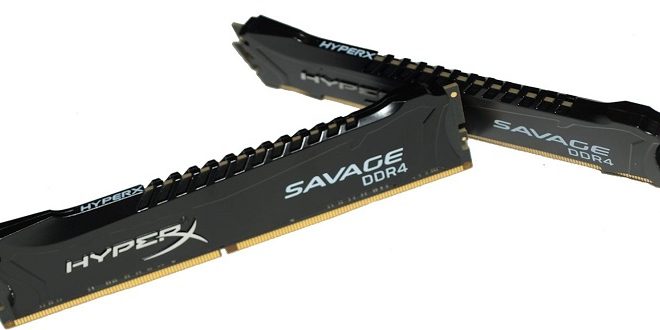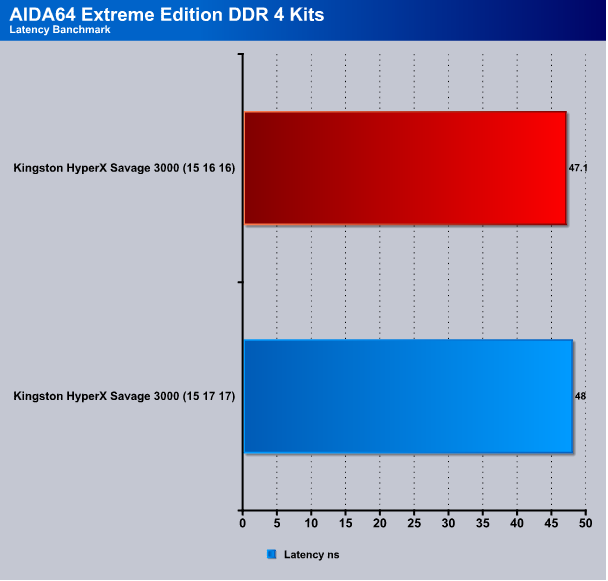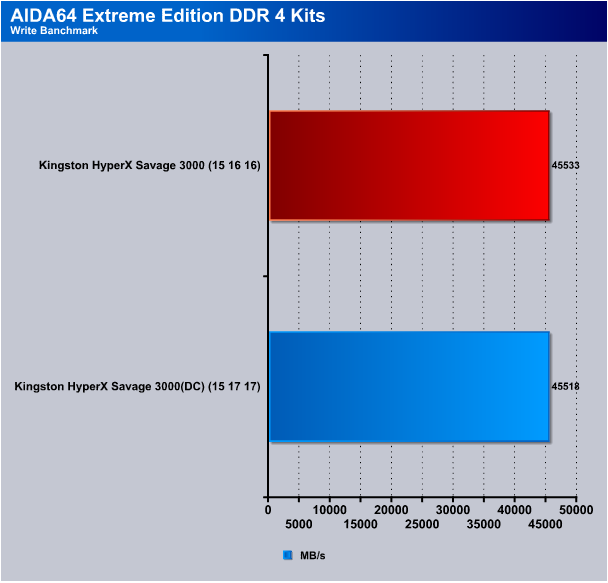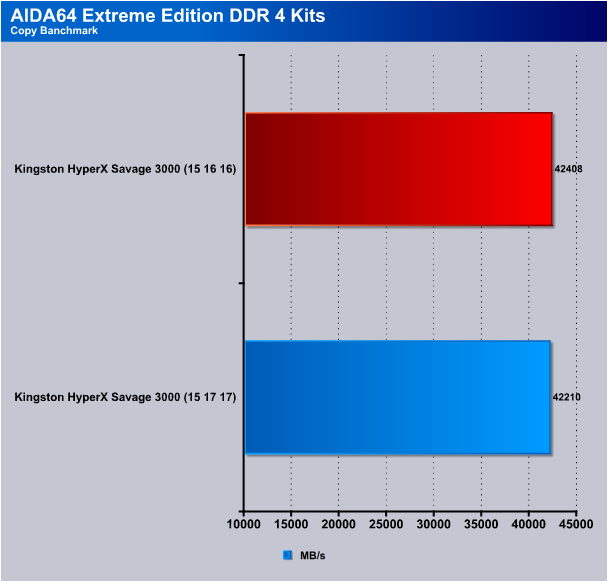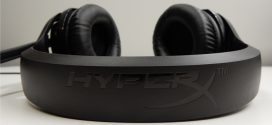AIDA64
Memory Tests
Memory bandwidth benchmarks (Memory Read, Memory Write, Memory Copy) measure the maximum achiveable memory data transfer bandwidth. The code behind these benchmark methods are written in Assembly and they are extremely optimized for every popular AMD, Intel and VIA processor core variants by utilizing the appropriate x86/x64, x87, MMX, MMX+, 3DNow!, SSE, SSE2, SSE4.1, AVX, and AVX2 instruction set extension.
The Memory Latency benchmark measures the typical delay when the CPU reads data from system memory. Memory latency time means the penalty measured from the issuing of the read command until the data arrives to the integer registers of the CPU.
Latency is the time between the CPU requesting info from the RAM and how long it takes to get to the data registers of the CPU. The Kingston HyperX Savage 3000 (15-17-17) set came in at a flat 48ns while the Kingston HyperX Savage 3000 (15-16-16) hit 47.1ns so the CL 15-17-17 kit came in 0.9ns or 9/1000000000/s slower. Each Nano Second is one billionth of a second and the CL 15-17-17 39 kit came in 0.9ns slower.
The Aida64 write benchmark shows the CL 15-16-16 39 kit at 45533MB/s while the CL 15-17-17 39 kit came in at 45518MB/s or 15MB/s slower which is such a small difference it might be just a minor variation in the benchmark run.
The Copy benchmark shows our Kingston HyperX Savage 3000 (15-17-17) in at 42210MB/s and the Kingston HyperX Savage 3000 (15-16-16) kit at 42408MB/s the CL 15-17-17 kit came in at 190MB/s slower.
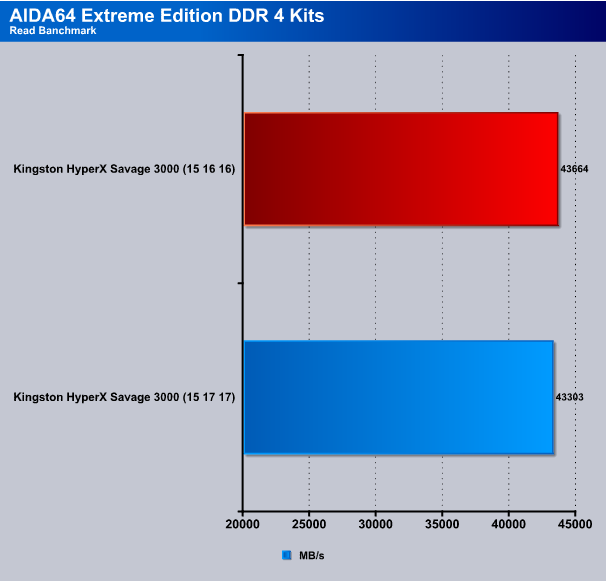
The AIDA Read benchmark shows the CL 15-16-16 kit at 43664MB/s while the CL 15-17-17 kit came in at 43303MB/s which is 361MB/s slower but since the overall speed is 43303MB/s it’s not going to make much difference except in programs like Folding at Home or Bitcoin mining.
 Bjorn3D.com Bjorn3d.com – Satisfying Your Daily Tech Cravings Since 1996
Bjorn3D.com Bjorn3d.com – Satisfying Your Daily Tech Cravings Since 1996
